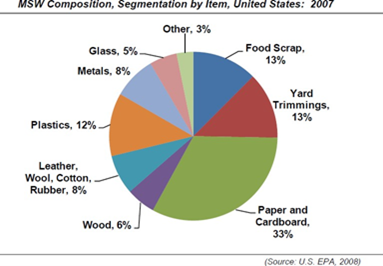World Population Counter
Waste by the numbers

Anthropogenic environmental damage can be halted with Pyrogen Energy’s latest technology. Aside from environmentally friendly operation, the Pyrogen Energy system also is a means of revenue generation through electricity production. Amazing opportunity exists for countries and businesses all over the world to not only eliminate waste in an environmentally responsible way, but to also generate revenue; reducing the need to burn fossil fuels to generate electricity. Enormous benefits can be realized with our system, including self sufficiency in a closed loop. This system is the only system of its kind currently available. Using patents we currently hold as well as patent-pending technology, Pyrogen Energy leverages an enhanced plasma arc to process virtually any carbonaceous waste and drive high efficiency turbines, creating an electric surplus. The electricity can be grid tied and sold directly to the utility provider.
Main benefits of the Pyrogen system:
• One Pyrogen Energy unit operating in a traditional landfill has enough stored waste to stay operational for 25 years. (figures do not include future waste accumulation at this single landfill)
• Pyrogen Energy uses 75% less electricity per ton compared to other arc-based systems. This results in three times more electricity provided to the grid.
Problem Worth Solving
Each year, Americans average nearly 4.9 pounds of trash per person per day, or collectively about 251 million tons per year. We recycle about 87 million tons of this waste, for a total recycling rate of around 34 percent; but most of the waste we produce ends up in county-run landfills across the country. Known as municipal solid waste, this trash is composed of disposable items, including food waste, yard clippings, electronics, tires, furniture and more. Counties play an important role in the collection and disposal of municipal solid waste by providing regular and efficient waste collection to ensure waste is properly handled at landfills to avoid environmental damage from soil and groundwater contamination.
The current recycling rate of 34 percent is the highest it has been in the US since the 1980s, when it was around 10 percent. Through efforts including recycling, composting, and municipal solid waste incineration, we now send about 54 percent of all waste in the US to landfills, compared to 89 percent in 1980. Items with the highest recycling rates include lead-acid batteries (96 percent), steel cans (70.8 percent), paper (70 percent), yard waste (57 percent), and aluminum cans (54.6 percent).
Despite these efforts, each year some 135 million tons of municipal solid waste are sent to landfills across the country. It can be expensive to create new landfills when existing ones fill up, and transporting waste to landfills in other counties or even across state lines can be cost-prohibitive. Additionally, landfills are the third-largest human-generated source of methane emissions in the US, threatening the local environment and air quality.
Counties have turned to alternative methods of municipal solid waste disposal and handling to avoid sending unnecessary waste to their landfills, and to find value / added benefits from landfill waste. Methods such as landfill gas-to-energy and waste-to-energy allow counties to generate renewable heat and electricity from previously unused sources. These methods can allow counties to generate new streams of revenue through the sale of electricity and captured methane, lower their energy costs, reduce their emissions, improve local air quality, and strengthen public-private partnerships.